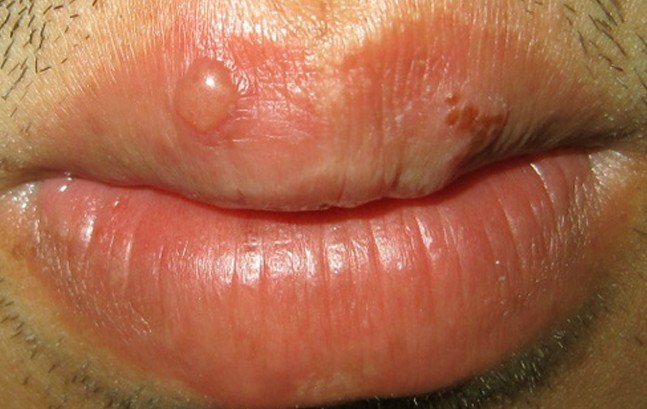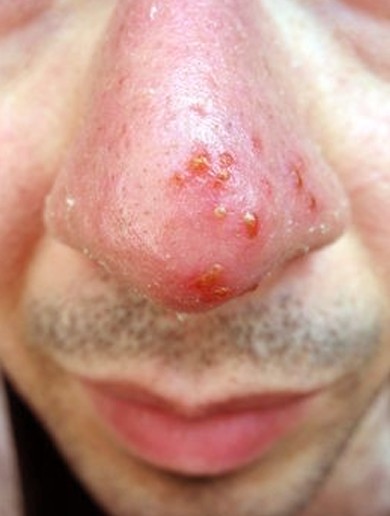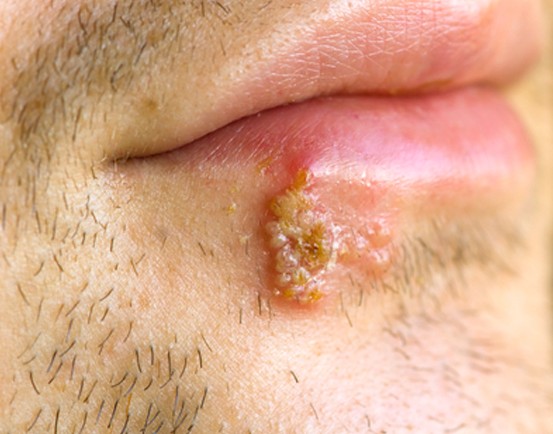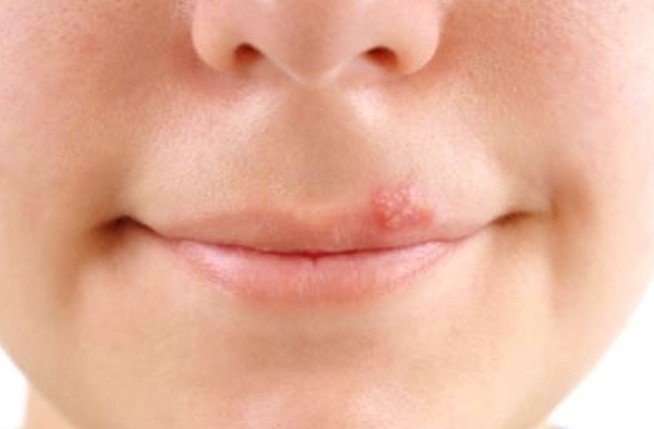Fever Blisters
Last reviewed by Dr. Raj MD on January 12th, 2022.
What are Fever Blisters?
Fever blisters or more commonly known as cold sores are blister like lesions or a group of small blisters that usually occur in the oral cavity and the lips. The blisters often form around the lip in clusters or in group of patches.
Fever blisters generally recur after its initial onset which is usually before an individual reaches the age of 10 years. The virus that caused the initial onset of fever blisters remains inactive or dormant for some time until it becomes active and recurs at any time in life. The virus of cold sores is basically not eliminated by the body that the incidence often recurs.
The lesion in fever blisters is characterized by the development of fluid-filled blisters that appears on the lip or in the mouth and may also occur in the nose. The blisters formed in clusters or in patches and are generally painful that may cause discomfort to the patient.
Fever blisters often develop in the border of the lip and mostly affect individuals with weak immune system. It equally affects both men and women and can happen to almost anyone regardless of age and ethnic group.
Fever blister is not a serious condition, nor is it life-threatening which may need an immediate medical attention. The onset however can affect the quality of life as it can be painful and cause discomfort and can also affect the cosmetic aspect due to the evident development in the face. Although not a serious condition, fever blisters necessitate treatment as blisters left untreated, may result to a medical complication, especially if the lesion gets more infected and aggravated.
Fever Blisters Symptoms
The virus that caused the fever blisters usually remains dormant or inactive after its initial onset and then become active when triggered. Fever blisters for most people develop without symptoms and can only be noticed when the blisters already formed. There are some patients who get to experience symptoms which during the initial onset can be severe.
Patients that develop symptoms after initial infection from the virus causing the fever blisters experience the following:
- Onset of fever
- Headache
- Nausea and vomiting
- Sore throat may also be experienced
The symptoms in recurrent fever blisters are less severe and usually last for a shorter period, compared to the primary or the initial onset of fever blisters.
Fever blisters typically develop in stages during the course of its development which takes about 8 to 10 days or two weeks at the most.
Tingling and itching is the early stage where tingling and itching is felt over the affected area. It may also be associated with a burning sensation and the skin on the affected area of the lip may have a sensation of tightening that usually linger for a few hours to a few days. Swelling and redness over the affected area will also occur and which is due to the inflammation as a reaction to the infection. This stage occurs on day 1 or day two right after exposure to the causative agent.
Blister onset is the stage where the blister becomes apparent day 2 to day 4 following the early stage. The group of blisters often forms at the border of the lip and is usually painful. The blister is filled with fluid which is the result of white blood cells traveling to the site of the blister as a normal response of the body to ward off the infection.
Ulceration or the oozing and crusting stage usually occurs on day 4 from the time of initial onset. This is the most painful stage where the blisters are erupting forming a shallow ulcer or an open sore. The affected area can be seen with red ring of inflammation and the fluid filled blisters begin to form a crust.
On the 8th to 10th day or 2 weeks at the most, the ulceration will begin to heal and form a crust. This is the healing stage where the scab usually forms and falls off. Dry flaking and residual swelling is noticeable and the skin of the infected site remains pinkish or reddish in color until the blisters completely heal.
Causes of Fever Blisters
Fever blisters are caused by a certain strain of Herpes simplex virus. Herpes simplex virus 1 or HSV-1 is the main implicated in the onset of fever blisters. HSV-2 is also being implicated although it affects the genitalia more often than in the oral cavity.
The recurrence of fever blisters is often triggered by several factors, particularly when the immune system of an individual is at its lowest. The virus strain basically remains dormant after the initial onset of fever blisters and may recur at any time when the virus is triggered.
The causes of fever blister recurrence include the following:
- Prolonged exposure under the sun
- Emotional stress and physical stress
- Onset of flu or fever and colds
- Menstrual period or during hormonal changes
- Incidence of skin trauma
Fever Blisters Treatment
It usually takes two weeks for the fever blisters to heal without treatment. Medical treatments however are made available to hasten the healing process and to relieve the other symptoms associated with the incidence. The medical treatment for fever blisters may be in the form of a pill taken orally or it can be administered intravenously. Topical antiviral creams and ointment is also another form of medical treatment which is applied over the affected skin. Antiviral drugs such as Acyclovir, Famciclovir, Penciclovir and Valacyclovir are the most common drugs prescribed for the treatment of fever blisters.
The virus causing the fever blisters on the other hand cannot be completely eradicated and instead remain in the body for the rest of life. The virus will linger and stay inactive until the virus is triggered again and the fever blisters recur sporadically.
Are Fever Blisters Contagious?
Fever blisters are generally contagious which can be passed on from one person to another. The mode of transmission is via close personal contact with a person infected with the HSV-1 virus or with the HSV-2 virus. HSV-1 commonly affects the oral cavity and kissing is one way of passing on the virus. HSV-2 virus can also cause fever blisters although this virus often affects the genitalia. Oral sex is one way of transmitting the virus to an uninfected person.




